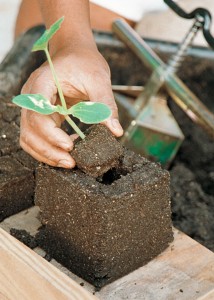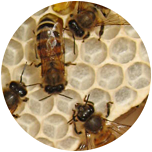 As I say in my blogroll, TreeHugger is where I go to get enraged. In what should be an innocuous Top Nine Products for Healthy Soil post, I managed to flip my lid twice.
As I say in my blogroll, TreeHugger is where I go to get enraged. In what should be an innocuous Top Nine Products for Healthy Soil post, I managed to flip my lid twice.
Peat is bad and Coir is good, we are told. Coir is the hairy outer fibres left over from coconut milking—which means it comes from places where coconuts come from. Seriously? Are we really having a conversation about whether we should mine North American peat or ship in coir from afar?
So the correct answer is neither.
Or maybe it is not that tidy. Eliot Coleman, in the encyclopedic New Organic Grower, speaks against coir and for peat. From page 118:
I do not share the anti-peat-moss sentiment I occasionally hear expressed. The anti-peat movement began in Europe where, because of population density, limited peat deposits, and centuries-long use of the resource, they are at a point where finding a substitute for peat makes sense…Of the peat lands in North America, only 0.02 % (2/100 of 1 per cent) are being used for peat harvesting.Coleman is great about annotating and referencing. Sadly, he has not included sources for these numbers On this continent peat is forming some five to ten times faster than the rate at which we are using it…To my mind that is the definition of a renewable resource.
Thinking bio-regionally, Coleman says, “The crumbly insides of well-rotted maple and birch tree trunks on the forest floor gave reliable results in potting mixtures. For warmer climates kenaf has shown promise…In some trials a kenaf substrate proved more successful than peat moss.”
So, for now, I bought a big bale of peat for my potting mixes. At the rate I am going, it looks like it will last five years or so. I won’t use peat to amend my actual garden—there are so many leaves, clippings and chips to be had.
Sustainability means ‘able to be sustained’. Sticking my seedsSeeds, after all, want to live, and usually grow in dirt. I have dirt. Furthermore, every forest, meadow and thicket seems to have grown just fine without coir. into coconut fibre that has been shipped a quarter of the way around the planet is clearly not sustainable, though it may be ‘greener’ than mining European peat. Coleman wraps it up, “But if we do need a substitute, some of the present contenders, like coir fiber imported from faraway South Pacific islands, make very little sense.”
